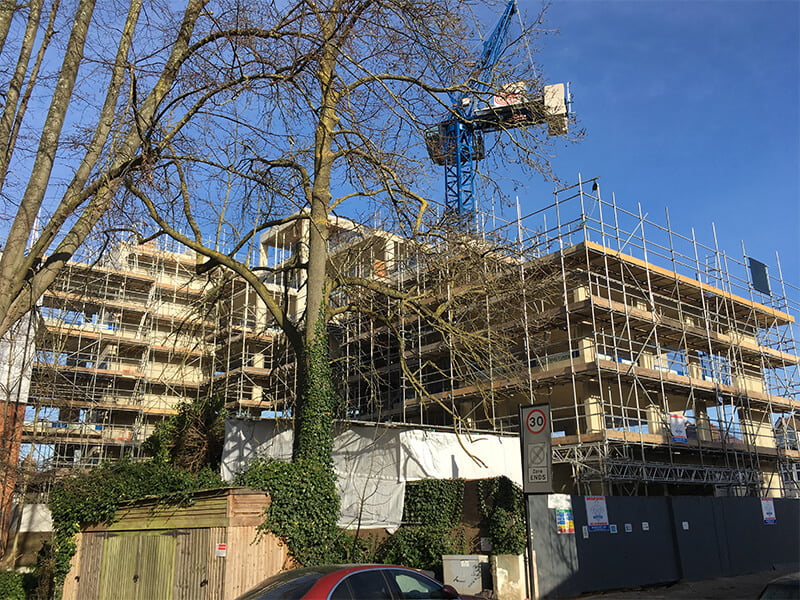Scaffolds should be inspected by a competent person before each work shift and after any event that could affect the scaffold’s structural integrity, such as severe weather or impact from falling objects. Additionally, scaffolds should be inspected at least once every seven days by a competent person if they remain in use. These inspections should be documented and any issues identified during the inspection should be promptly addressed.

For safety purposes, regular inspections are required solely because damaged scaffolds that haven’t been properly installed may result in some hazardous injuries on the construction sites. Especially when dealing with a more complex structure. This in turn can result in some serious lawsuits and financial penalties for the parties in question.
It’s crucial to make sure that scaffolds are carefully inspected before and during use to make sure any incidents that could affect people’s health and safety are avoided. Scaffolds are essential for construction workers because they provide support, especially when working at height. That is why it is important you do regular scaffold inspections.
Poorly set up or badly conditioned scaffolds can be hazardous to anyone around, especially the construction workers or passers-by if it’s along the highway. Although the scaffold may appear secure at first, continuous use makes the structures weaker, especially if you are using a basic scaffold structure hence making inspection necessary. Here is what you need to know about scaffold inspection.
Who carries out scaffold inspections
In the UK, qualified scaffolders are the ones that carry out scaffold inspections. Scaffold inspections must be done by a competent person, and their experience, training, and knowledge is enough for the complex nature of the scaffold.
According to Regulation 12 of the Work at Height Regulations 2005, regular scaffold inspections must be carried out and this duty lies with the construction company or persons hiring or with the end-users of the scaffolds, commonly the one to accept the handing over certificates from the scaffold contractor.
The person doing a scaffold inspection usually depends on the level of complexity of the scaffold itself. A basic scaffold inspection can be done by someone who has completed their (Construction Industry Scaffolders Record Scheme) CISRS scaffold inspection course. However, more complex structures are inspected by people holding a CISRS Advanced Inspection Card or someone with a CISRS Advanced Scaffolding Qualification.
How scaffolding is inspected
Scaffolds are inspected before use and thereafter, regular inspections are done after a period of seven days. The purpose of the scaffolding inspections is to check whether there are any errors in the installation of the scaffold or if there is any damage.
This is because scaffolds are only temporary structures and they are easily affected by factors such as adverse weather.
Scaffolding structures have a number of things that have to be considered during the inspection. Some of these things are:
- The tasks which you intend to do
- The work environment
- The structure height
- The scaffold design
After each inspection, a report is issued and it must be kept on site until completion of the project. It is thereafter stored in the construction office for an additional three months after this.
The contents of the scaffold inspection report include:
- The name and address of the person that the inspection was carried out for.( the employer)
- The name and position of the person carrying out the inspection
- The date, time and location of the inspection
- A thorough description on of the scaffolding structure
- Clear details of any risks that were identified
- Clear details of the actions taken
- Details of any further action that is deemed necessary

Are scaffold inspection reports a legal requirement
Scaffold inspection reports are a legal requirement if they may lead to the users falling two or more meters during the construction work. Failure by employers to carry out the required inspections will mean that the employers will have gone against the regulations outlined in the Working at Heights Regulations 2005 and thereafter failed to protect their workers.
Inspections need to be carried out regularly and a report issued to ensure that the safety of the workers is guaranteed. Uninspected scaffolds are a huge risk to anyone working on or around them because the poor setting of the structure results in it becoming unsafe for use since it gets less efficient as its use continues.
After completion, a scaffolding handover certificate is usually issued and any limitations with the structure are listed there. It may not be a legal requirement but it is important for both the clients and the scaffolders.
With the scaffolding inspection, you get to avoid unnecessary hazards at the construction site since the workers get safe working platforms. With the above information, you also know what’s expected of you and how to go about scaffolding inspection for your project and who should conduct the exercise.